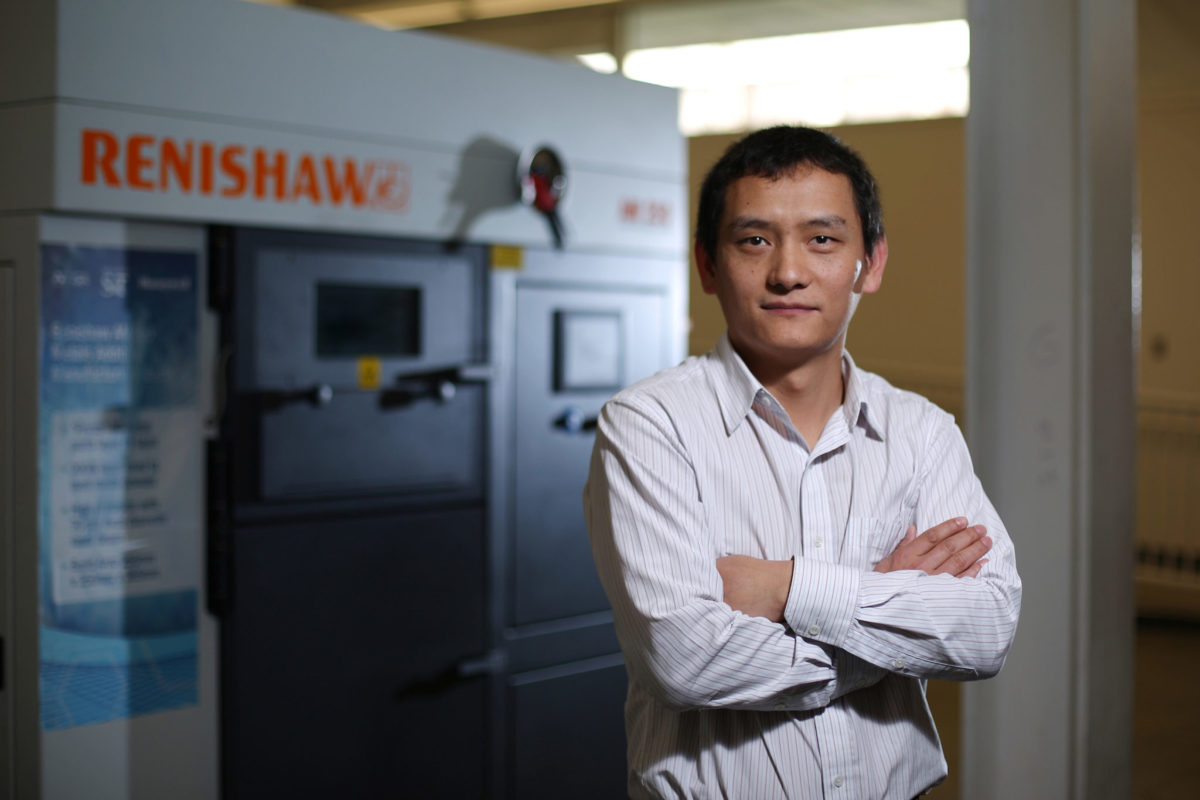Researchers capture microscopic manufacturing flaws via high-speed X-ray movies
Posted by Andrew Careaga

Dr. Lianyi Chen, Missouri S&T assistant professor of mechanical and aerospace engineering, in his lab. Photo by Sam O’Keefe/Missouri S&T
Microscopic defects that occur in laser-based manufacturing of metal parts can lead to big problems if undetected, and the process of fixing these flaws can increase the time and cost of high-tech manufacturing. But new research into the cause of these flaws could lead to a remedy.
Researchers from Missouri S&T, Argonne National Laboratory and the University of Utah created high-speed X-ray “movies” of a manufacturing phenomenon known as laser spattering. Laser spattering refers to the ejection of molten metal from a pool heated by a high-power laser during laser-based manufacturing processes, such as laser welding and laser-additive manufacturing. These laser manufacturing technologies are used to fabricate parts for use in a variety of industries, including aerospace, the automotive industry, healthcare and construction.
The researchers describe their findings in a paper published today (Friday, June 14, 2019) in the journal Physical Review X.
Using X-ray imaging, the researchers captured the spattering behavior of a titanium alloy known as Ti-6Al-4V during fabrication. Their microscopic movies reveal “a novel mechanism of laser spattering – the bulk explosion of a tongue-like protrusion” that forms in one region of the metal, the researchers say in their paper, titled “Bulk explosion induced metal spattering during laser processing.”
“The newly discovered mechanism will guide the development of approaches to mitigate defect formation in welds and additively manufactured parts,” says Dr. Lianyi Chen, assistant professor of mechanical and aerospace engineering at Missouri S&T and one of the paper’s corresponding authors.
Chen collaborated with Dr. Tao Sun’s team at Argonne National Laboratory and Dr. Wenda Tan’s team at the University of Utah on the research. The group created the images through the use of a high-energy synchrotron X-ray at Argonne National Lab along with image analysis and numerical simulations. Researchers at the Argonne facility employ X-ray scattering techniques to study materials.
“The high penetration power of hard X-rays and high resolutions of the imaging technique enable us, for the first time ever, to connect the spattering behavior above the surface with dynamics below the surface and inside the titanium sample,” Chen says.
Working with Chen on the research is Qilin Guo, a Ph.D. student in mechanical engineering at Missouri S&T.
Leave a Reply